Abstract
The lytic activity of 132 phages isolated during slow acid production in cheese factories situated in all the dairying regions of France during the past 16 years has been determined on 291 strains of mesophilic lactic streptococci. The results have been treated according to a method of analysis of data so as to establish a classification. Six groups of phages have thus been formed. Sixty-six percent of the phages studied, which are very similar and for the most part nonspecific to one species, have been gathered together in one group. On the other hand, a classification of the bacterial strains has been made on their sensitivity to the phages. Six groups, each corresponding to one of these groups of phages, have thus been defined. One of them accounts for 40% of the strains studied, of which certain ones are sensitive to a large number of phages.
Full text
PDF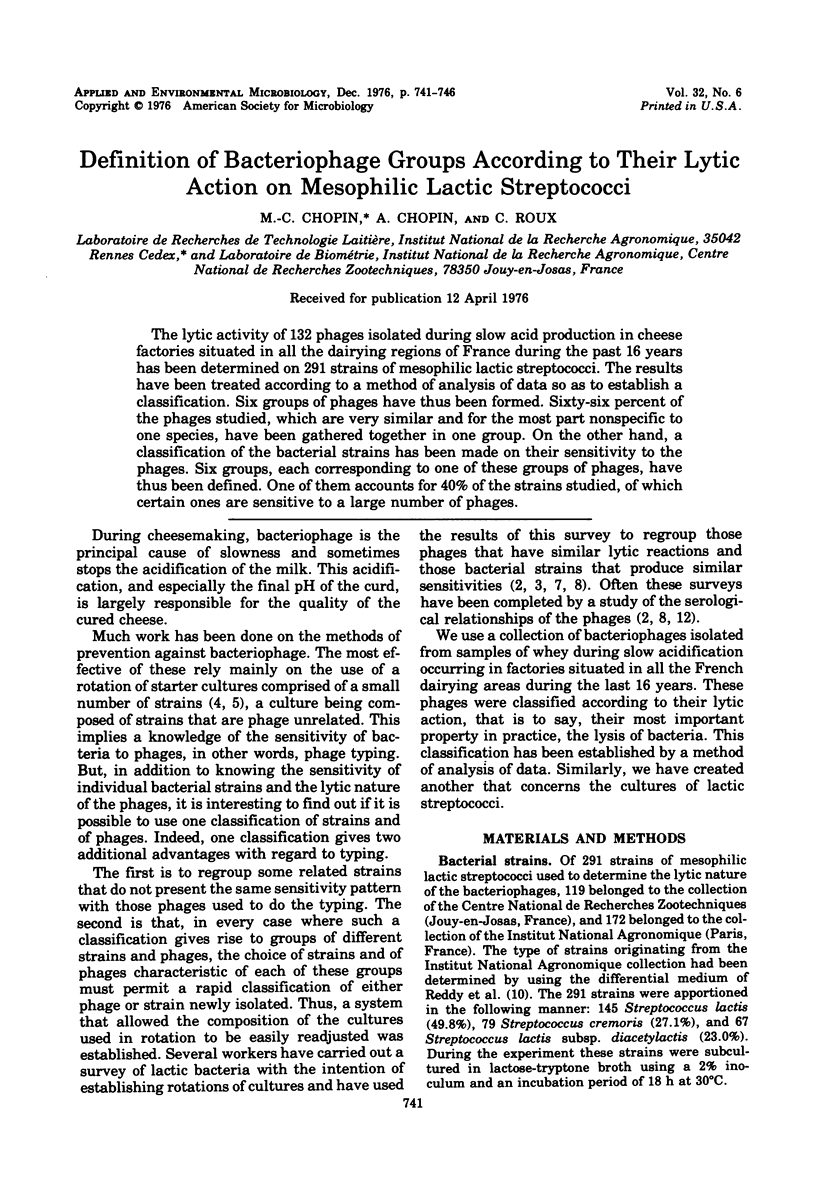
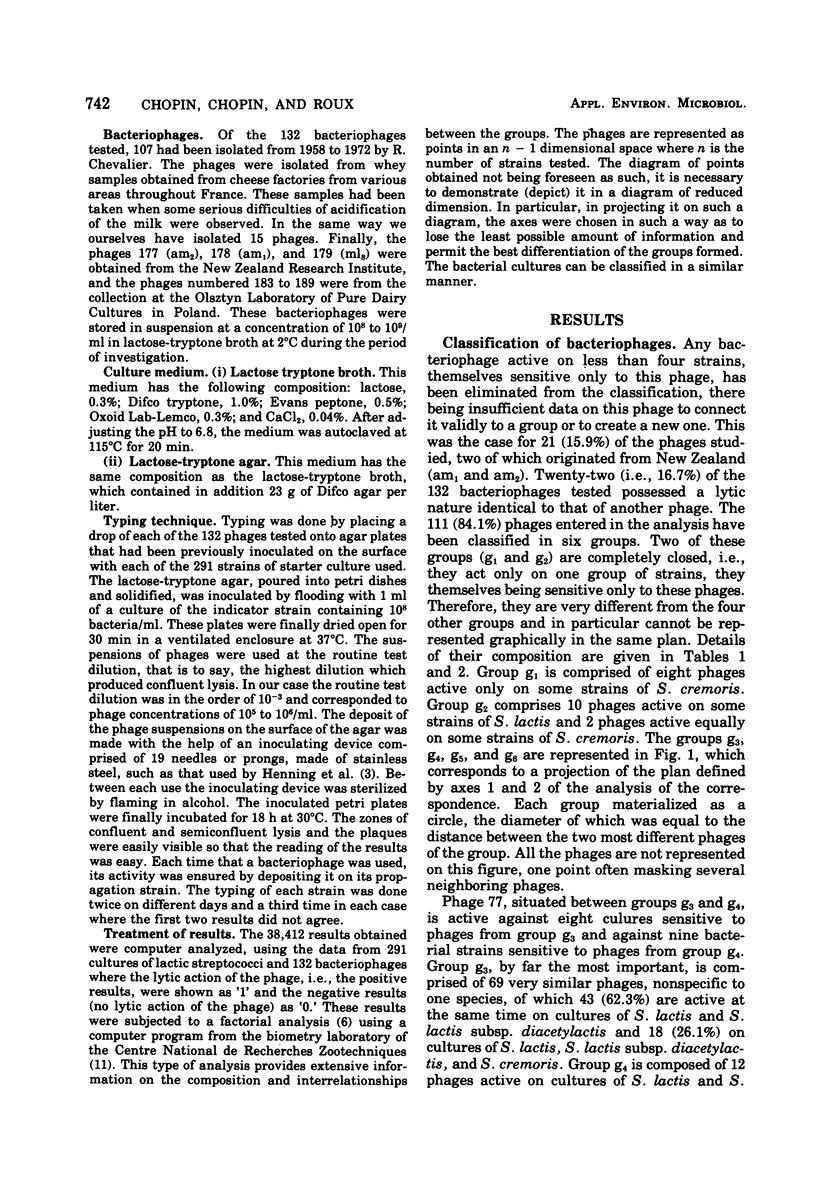
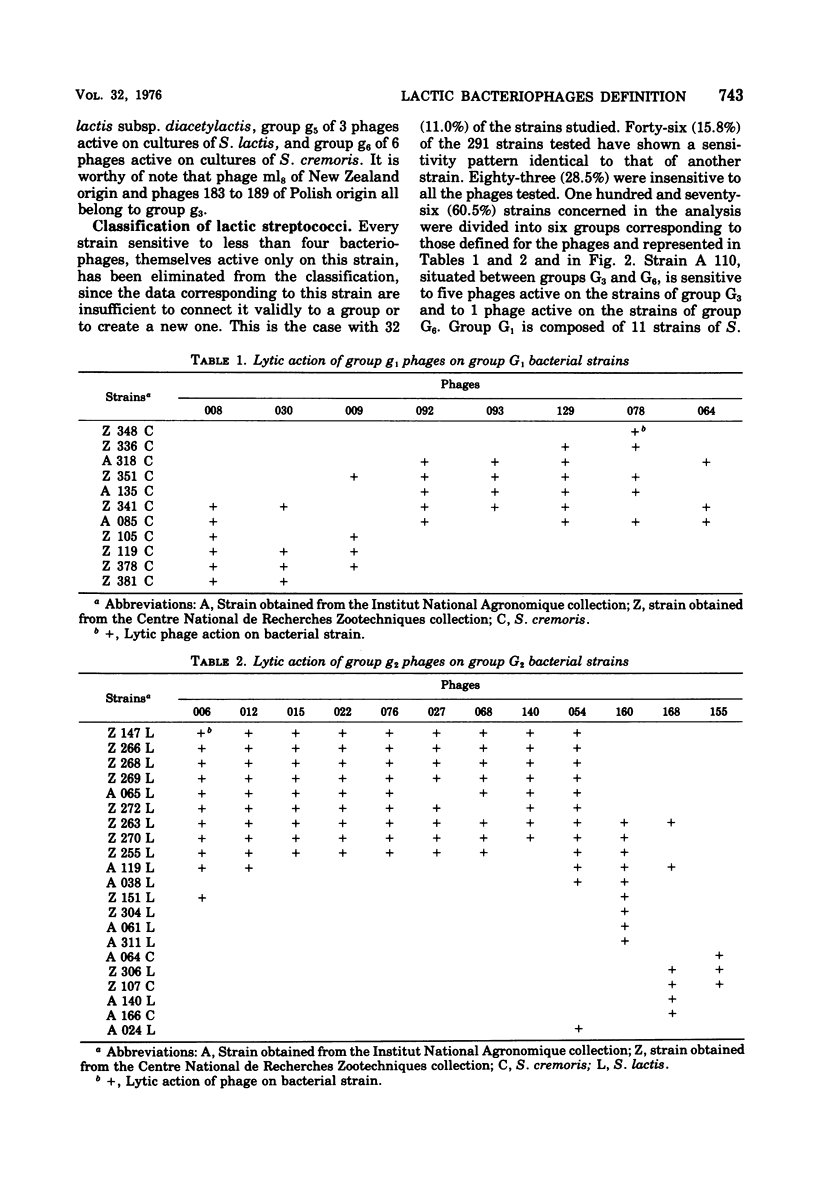

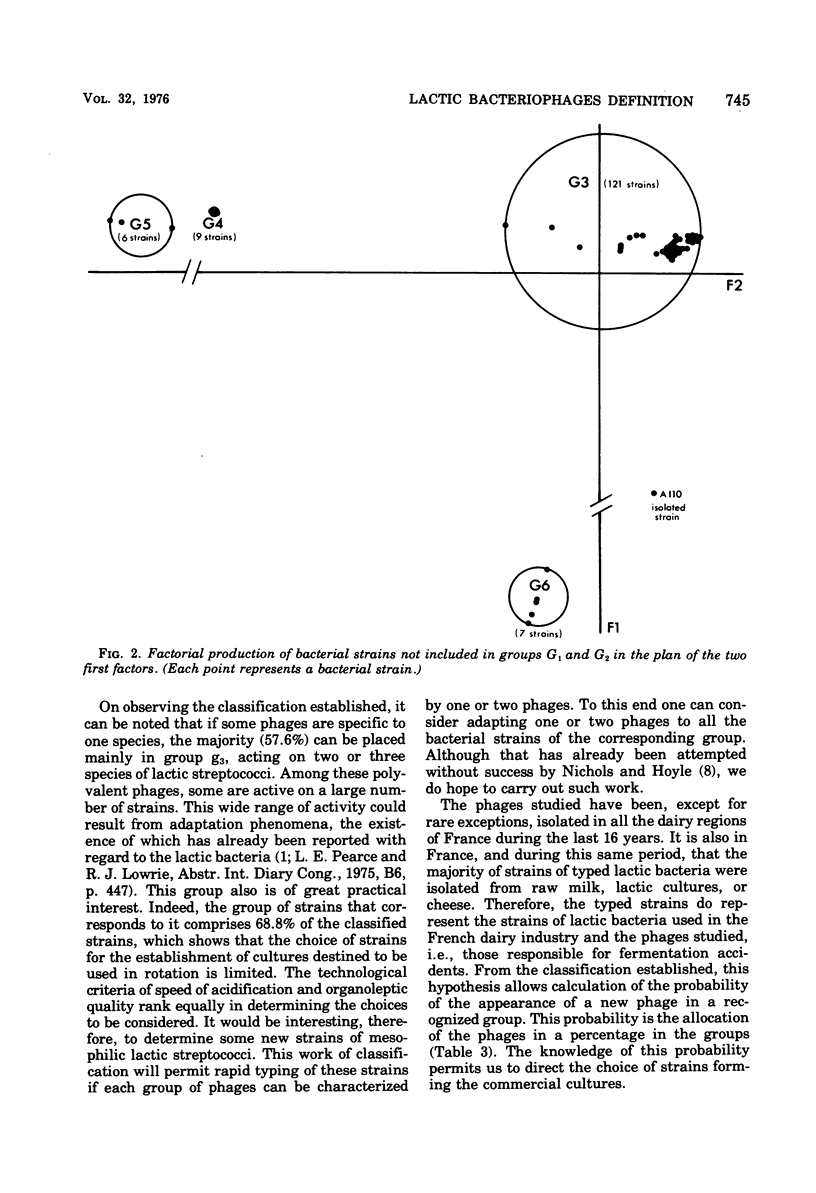
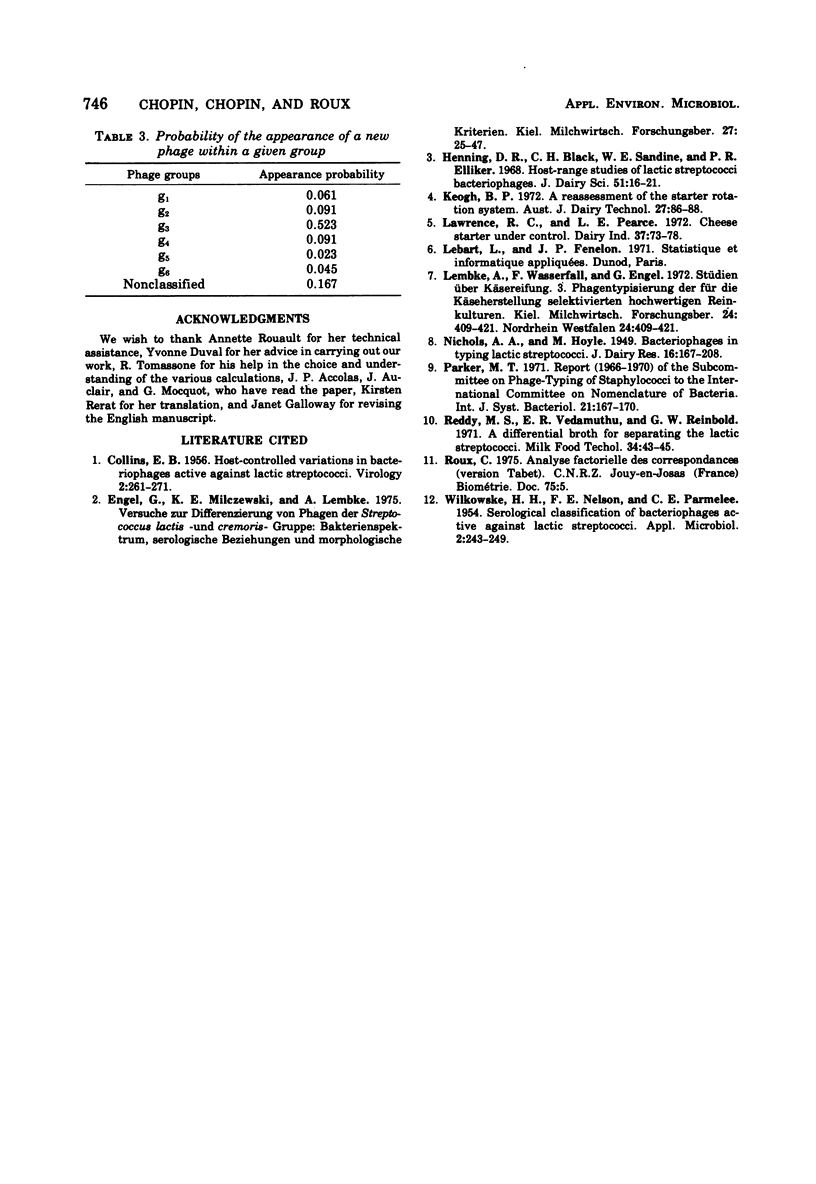
Selected References
These references are in PubMed. This may not be the complete list of references from this article.
- COLLINS E. B. Host-controlled variations in bacteriophages active against lactic streptococci. Virology. 1956 Apr;2(2):261–271. doi: 10.1016/0042-6822(56)90021-6. [DOI] [PubMed] [Google Scholar]
- WILKOWSKE H. H., NELSON F. E., PARMELEE C. E. Serological classification of bacteriophages active against lactic streptococci. Appl Microbiol. 1954 Sep;2(5):243–249. doi: 10.1128/am.2.5.243-249.1954. [DOI] [PMC free article] [PubMed] [Google Scholar]


